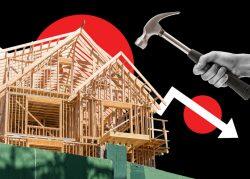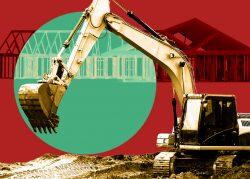 Homebuilding in north Dallas suburbs slumping due to declining market
Homebuilding in north Dallas suburbs slumping due to declining market
Trending
DFW homebuilding slump deepens, discounts offered
It’s giving great recession

Dallas-Fort Worth has reached a low in terms of single-family homebuilding.
Amid dwindling demand, North Texas homebuilders are hitting the brakes at a pace not seen since the Great Recession.
Dallas-Fort Worth homebuilders took out 2,564 single-family building permits in October, a 33 percent decline from October 2021, according to data from the Texas Real Estate Research Center at Texas A&M University and the U.S. Census Bureau. October was the sixth consecutive month that the metroplex saw year-over-year drops in the number of single-family permits. October also marked the steepest drop since 2009, the Dallas Morning News reports.
This trend first emerged in suburbs like Frisco and Celina back in June. At the time, Frisco’s permits fell by about 42 percent, racking up just 745 in the first five months of 2022, compared with 1,283 single-family permits during that same time in 2021. Celina’s slid 34 percent year-over-year during the same period with permits for only 887. Prosper dropped by 17 percent, and the Princeton and McKinney areas dropped 14 percent and 11 percent, respectively.
In the third quarter of 2022, homestarts in Dallas-Fort Worth saw a 34 percent plunge from 14,549 starts during the same period of 2021.
It’s gotten to the point where the state’s biggest builders have frozen their land acquisitions operations. For instance, last quarter, D.R. Horton wrote off $34 million in costs related to land and home-lot contracts that it terminated or expects to terminate.
Homebuilders are instead focused on selling unsold inventory, Ted Wilson of Residential Strategies, told the DMN. Builders who may have overdone it when the market was perceivably hotter have been discounting prices over the last few months, he said.
“There’s no sense of starting extra units if you have a bunch of unsold units that you have to move,” Wilson said, adding that a lower number of homes being built could lead to materials suppliers and subcontractors to lower their prices. As a result, the overall costs of construction could be significantly lower going into 2023.
“We hear that a lot of consumers are waiting for prices to come down; well, they’ve come down a lot already,” Wilson said. “And they’re likely to come down a little bit more. This next generation of houses is less expensive to build.”
Read more
 Homebuilding in north Dallas suburbs slumping due to declining market
Homebuilding in north Dallas suburbs slumping due to declining market
 DFW home builders tap the breaks as buyer pool shrinks
DFW home builders tap the breaks as buyer pool shrinks
— Maddy Sperling




